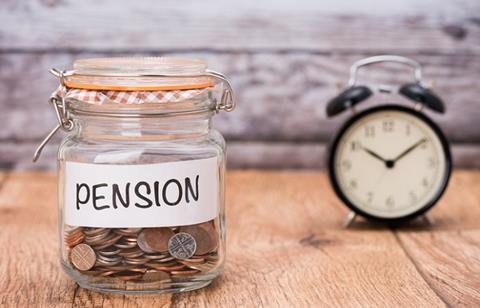
Retirement savers have accessed approximately £25.6 billion through pension freedoms since reforms were introduced in April 2015, according to data from HM Revenue and Customs (HMRC).
Its Flexible payments from pensions: April 2019 report also found that the number of individuals who have received flexible payments from their pensions between the second quarter of 2018 and the first quarter of 2019 is 539,000. This compares to 375,000 between the second quarter of 2017 and the first quarter of 2018, and 393,000 between the second quarter of 2016 and the first quarter of 2017. A total of 232,000 individuals received flexible payments from their pensions between the second quarter of 2015 and the first quarter of 2016.
Since the introduction of pension freedoms in April 2015, approximately 1.1 million individuals have accessed flexible payments. A total of 6.1 million payments have been made since April 2015.
Helen Morrissey, pension specialist at Royal London, said: “[These] figures show the appetite for pension freedoms remains undimmed, with more than £25 billion being accessed since freedom and choice was introduced in April 2015. With more than £2 billion being accessed in the last quarter alone, it is clear the reforms have injected real flexibility into people’s retirement planning.”
Between January and March 2019, 648,000 payments were received by 284,000 individuals, totalling £2 billion. This compares to 628,000 payments to 264,000 individuals in the fourth quarter of 2018, worth £1.9 billion.
From July to September 2018, 585,000 payments were made to 258,000 individuals, totalling £1.9 billion. Between April and June 2018, 574,000 payments were made to 264,000 individuals, amounting to £2.2 billion.
Steven Cameron, pension director at Aegon, added: “The freedoms marked a radical change in the retirement landscape, which is now almost unrecognisable from where it was before inception in 2015. Individuals now have much more control over their pension savings, including allowing those looking for a more gradual transition into retirement the chance to work, combining reduced hours with part pension as they approach or move beyond traditional retirement age.
“While the number of payments made is also at a record high, the average amount being withdrawn has fallen year on year since inception. In the first year, the average value was £8,430. This had fallen to £3,713 for 2017-2018 and has fallen again to £3,358 in 2018-2019 suggesting individuals are exercising restraint over how much to take out.
“This is encouraging as with greater flexibility comes greater responsibility and the freedoms have also introduced an increased risk. Historically, retirees would receive a fixed income which would last them for the rest of their life, but now many are responsible for investing appropriately and ensuring they do not overspend, risking their pension pot running dry part-way through retirement. The more people who take advantage of pension freedoms, the greater is the need for access to professional financial advice.”
The figures are based on data reported to HMRC, with numbers rounded to the nearest 1,000. The yearly individual totals are lower than the sum of the quarterly individual numbers, as some have taken payments in multiple quarters.
Reporting was optional up to April 2016, when it was made compulsory. For this reason, figures prior to this are not comprehensive. This may account for part of the increase in reported payments seen in the second quarter of 2016.
Nathan Long, senior analyst at Hargreaves Lansdown, said: “Retirees shrugged off any Brexit concerns in the first three months of the year, avoiding the temptation to raid their pensions. Withdrawals per person and per payment continue to fall year-on-year, showing that the initial dash to cash is firmly behind us. The stock market produced solid returns during the period; the behaviour of retirees when it goes into reverse looks [like] the obvious challenge on the horizon to the pension freedoms.
“Taking income from [a] pension [while] remaining invested, known as drawdown, is a higher risk strategy and it’s important to make sure [this] approach is sustainable. Make sure [there is] sufficient secure income from an annuity, state pension or final salary pension to pay the bills and then consider drawdown for the retirement nice-to-haves. If [opting] for drawdown, taking only the income from pension investments should ensure [the] pension lasts.”











